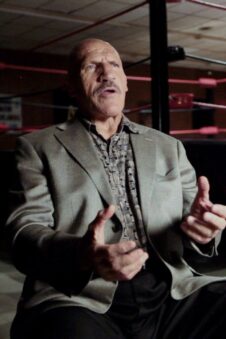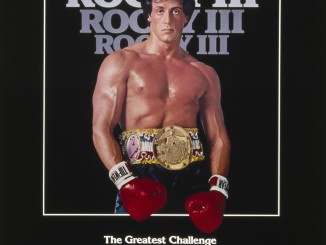
You know the film. It’s a film you have never heard of. The cast might be composed of actors you know and love or complete unknowns. You stumble across it on streaming and wonder if it will be worth two hours of you time. This series will be devoted to reviewing films like these, the strange items that pop up when you are looking for a flick on the streaming service of your choice. This is “We Found It On Streaming”

FILM: Bruno Sammartino
Release Date: October 29, 2019
Run Time: 96 Minutes.
Streaming Service(s): Amazon Prime Video, VUDU, Tubi
Rating: Not Rated
Before AEW or CM Punk, before the Rock or Stone Cold Steve Austin, before Hulk Hogan or Wrestlemania, before the WWE or even the WWF there was Bruno Sammartino. He was the undisputed face of professional wrestling in the 196o’s and 1970’s, holding the WWWF (What WWE was called back then) Heavyweight Title from 1963 to 1971 and again from 1972 to 1977. He is recognized as a legend in the industry, and when he was inducted into the WWE Hall of Fame in 2013, none other than Arnold Schwarzenegger inducted him.
Taking all of this under consideration, it was obvious that Sammartino would get a documentary that would examine his life in and out of the ring, detailing his struggles behind the scenes and in the public eye.
And maybe one day we will get that documentary, because Burno Sammartino isn’t it.

That sounds harsher than I mean it to be, but it is nonetheless true. I am a bit conflicted about the documentary. It does tell a fascinating story, but one that Bruno is only a bit player in.
Maybe if the documentary kept its original title, Bruno Sammartino, La Mia Mama, I might have known what to expect and viewed it more positively. Because a large part of the documentary details Bruno’s childhood and his mother Emilia is the focus of this part of the film.
Sammartino was born in Italy in 1935 and lived most of his childhood under the rule of dictator Benito Mussolini and the horrors of World War II. His father left him when he was four in order to establish himself in the United States. When Italy turned on Germany in 1943, Germans invaded Sammartino’s hometown of Pizzoferrato, causing its residents to flee to the nearby mountains. Facing a food shortage and with three mouths to feed, Sammartino’s mother, Emilia, would sneak back into town and steal from the food stores in her old house, which was now occupied by the Nazis. The trips were fraught with danger, and Emilia faced death on more than one occasion, including going so far as being bought in front of a firing squad.
The story is powerful and moving. Emilia’s story, told through dramatization with actors portraying her and her children, is a harrowing part of history that I did not know before. It’s a story that could very well be adapted into a live-action film that would clean up at awards season.

However, Bruno is only a bit player in his mother’s story and since it is his name in the title of this documentary, and his alone, you might feel cheated if you came into this blind. Sammartino’s wrestling career gets little more than lip service paid to it.
And it’s not like Sammartino’s career in the ring doesn’t have its share of drama and interesting facets. He was one of the last stars of professional wrestling’s territory era (nowadays, wrestling is a global phenomenon. But back in Bruno’s day, the United States was carved up into different territories with very little crossover between them). That would be an interesting angle to explore. They touch on Bruno’s mid-80’s return to the WWF, but mostly speak on how well he did in the ring for a man in his 50s. They didn’t really go into why he came back–because his son David was trying to become a professional wrestler and Bruno was brought back to give him a boost in popularity.
There was also no mention of his break from the WWE in the 90s due to their risqué content and the drug problems in the company. There is no talk about his behind-the-scenes issues with Pennsylvania Athletic Commissioner Joe Cimino, Gorilla Monsoon or Ric Flair. They don’t really have him discuss his classic matches, any tales from the road or his opinions on other wrestlers of his era. All of that is boilerplate items for biographies like these. All of them, presumably, was left out to provide room for Bruno’s mom’s story.
But Bruno wrestled his last match back in 1987. There is a whole generation of wrestling fans that only know him from the wrestling history books and short clips on wrestling TV programs. They would be better served by learning about these things, by having a more in depth look into the man behind the legend.
Hence my quandary. Emilia Sammartino’s story is an important one and deserves to be told. But so is Bruno’s. Perhaps you might say that Emilia’s story wouldn’t be told at all if it wasn’t married to her son’s story. But I think the way they do it here does a disservice to both.
Have you found a film on streaming that you’d like us to look at? Leave it in the comments and it might appear in a future installment of this feature.




